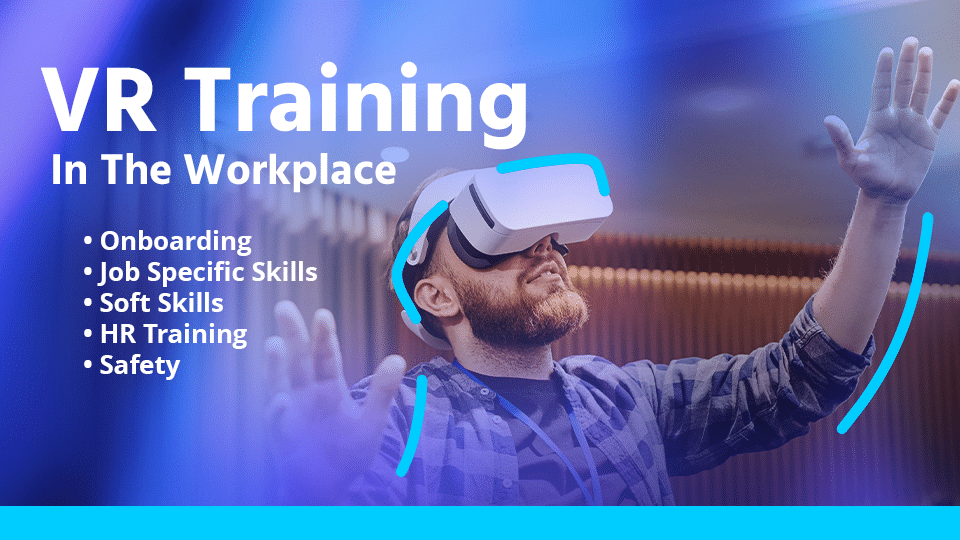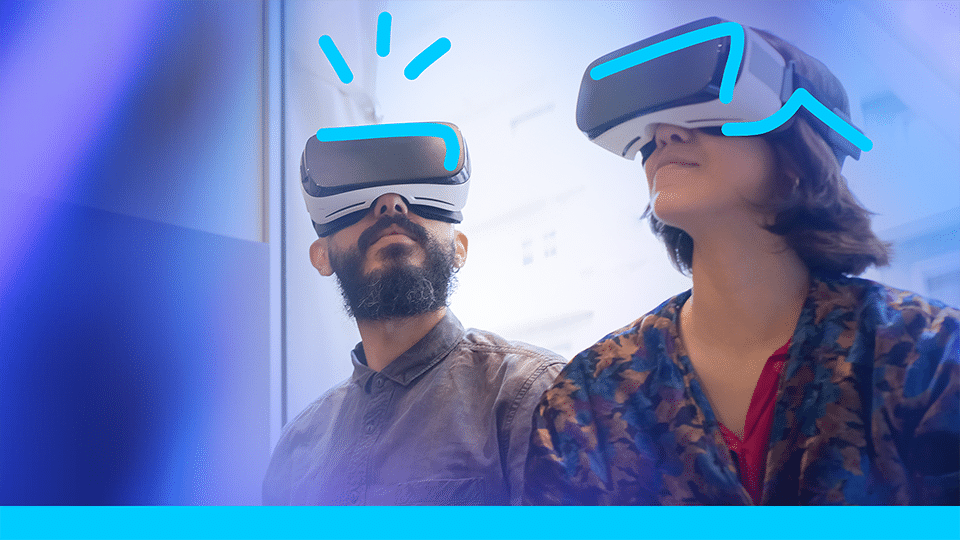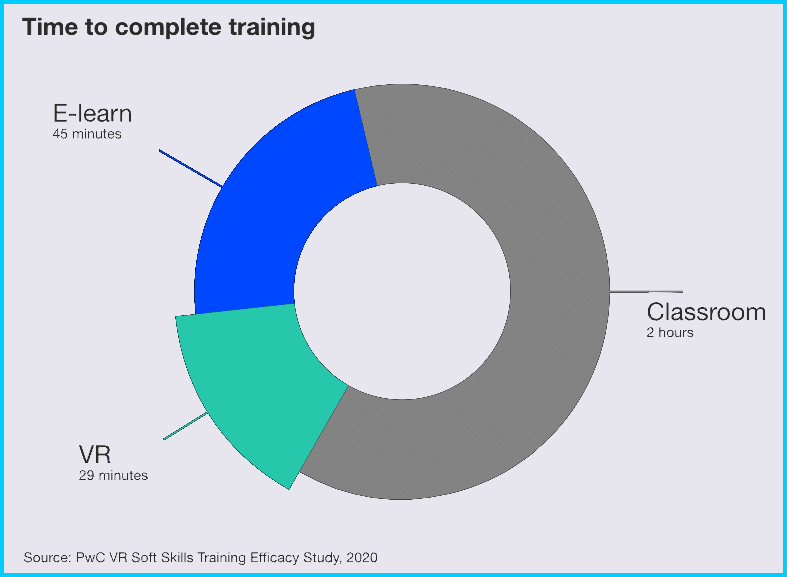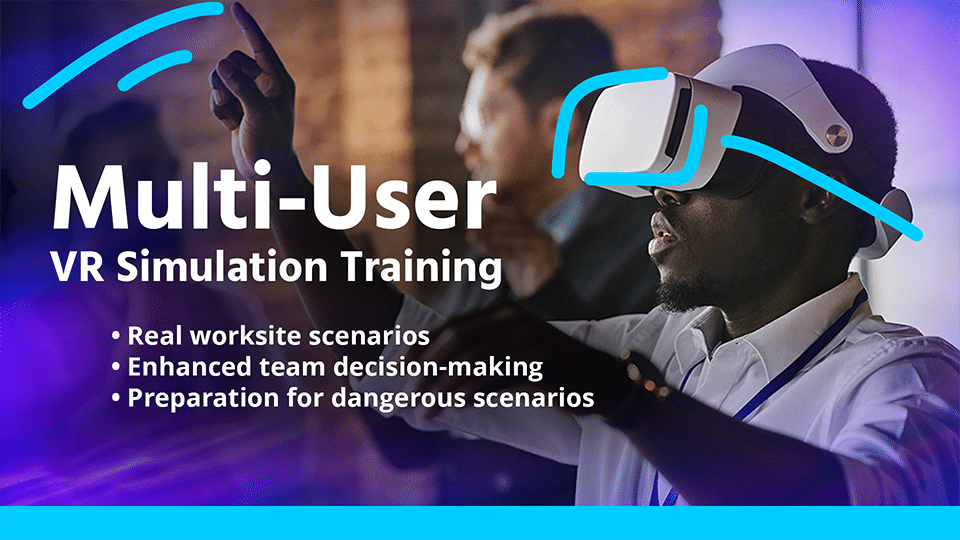In a recent study, it was found that organizations using Virtual Reality (VR) for training have seen a 70% increase in overall employee performance compared to those using traditional methods. This compelling statistic underscores the transformative impact VR is having on enterprise training programs worldwide. As businesses face an ever-evolving workplace, the need for adaptive, effective, and engaging training solutions has never been more critical. VR Training emerges as a powerful tool, offering immersive experiences that enhance learning and skill development across various industries.
What is VR Training
Virtual Reality (VR) Training is a cutting-edge method that immerses users in a digital simulation of real-world scenarios for training purposes. This innovative approach utilizes VR headsets and controllers, allowing trainees to interact within a virtual environment that mirrors their actual work settings. VR training is particularly advantageous for practicing tasks that are either too dangerous, expensive, or impractical to replicate in reality; such as emergency response, hazardous material handling, and intricate medical procedures.
Effectiveness of VR Training
Increases in learning retention
Studies indicate that VR significantly enhances learning retention rates compared to traditional training methods. The immersive nature of VR helps trainees retain up to 80% of the information transmitted through interactive and realistic experiences, an outstanding statistic compared to the 20% retention rate using traditional classroom training methods.
Improvements in job performance
VR training accelerates the speed to proficiency, equipping employees with the skills they need more efficiently. This method has been shown to improve job performance by over 70%, thanks to its ability to replicate real-world tasks and environments.
Learners more confident in applying what they’re taught
VR provides a controlled environment where learners can repeat scenarios until they feel confident. A PWC report found that participants trained via VR felt 275% more confident in applying skills learned after the training, a 40% improvement over traditional training.
Benefits of VR Training
Safe and controlled environment
VR creates a risk-free setting where trainees can practice potentially dangerous tasks without the fear of real-world consequences, enhancing both learning and safety.
Training time reduction
VR reduces the time required for training by 40-60%, streamlining the process significantly compared to traditional methods.
Real-time data & analytics
VR platforms offer real-time feedback and detailed analytics on trainee performance, allowing for adjustments and improvements in training programs on-the-fly.
Upskilling employees to remain competitive
In rapidly evolving industries, VR training helps businesses keep their workforce up-to-date with the latest skills and technologies, maintaining competitiveness.
Remote friendly option
VR enables remote training, which is essential in today’s increasingly decentralized work environments. This capability is crucial for consistent training across global teams.
Cost-effective solution
By reducing the need for physical resources, travel, and training time, VR significantly cuts down costs, making it an economically viable and scalable option for many organizations.
Multi-user VR Simulation Training
Multi-user VR simulation training is a form of virtual reality training that allows multiple participants to interact and collaborate within the same virtual environment, regardless of their physical location. This technology enables a group of users to engage simultaneously in realistic simulations, tackling complex scenarios that mimic real-world challenges. By integrating multi-user functionality, VR training transcends traditional boundaries, fostering teamwork and enhancing decision-making skills through shared experiences. Participants can communicate, observe, and influence each other’s actions in real-time, making it an invaluable tool for collective problem-solving and team-building exercises. This form of training is particularly beneficial in fields such as healthcare, military, and corporate environments where coordinated team effort and crisis management are critical. Multi-user VR simulation training not only improves individual competencies but also strengthens group dynamics and overall organizational efficiency.
1. Tackle real worksite scenarios in a group setting
VR allows multiple users to interact in the same training session, regardless of their physical location, making it ideal for collaborative learning and team-building exercises.
2. Enhanced team decision-making
Through realistic simulations, teams can practice decision-making in high-pressure situations, improving their ability to handle real-world challenges effectively.
3. Preparation for dangerous scenarios
VR training prepares employees for high-risk situations by allowing them to experience and react to potential dangers in a controlled virtual environment.
How to Use Virtual Reality Training in the Workplace
Onboarding
Introduce new hires to the company’s processes and culture through immersive VR experiences that make first days engaging and informative.
Example: A multinational corporation uses VR to introduce new hires to its extensive production lines across different countries. In the VR experience, new employees wear headsets to virtually tour the factory floor, interact with virtual colleagues, and learn about safety protocols without stepping foot on the actual manufacturing site. This immersive experience not only familiarizes them with the workspace but also integrates them into the company culture by showcasing real-life success stories and team-building activities that their organization values.
Operator and job-specific skills
Tailor training modules to specific roles within the company, allowing employees to master the tasks and tools they will use in their daily work.
Example: An aircraft manufacturer employs VR to train assemblers and technicians, enabling them to practice complex procedures in a 3D environment. For instance, VR helps them master the intricate task of wiring a cockpit, which requires precision and understanding of spatial relationships. This tailored training significantly reduces errors when they transition to working on an actual aircraft, enhancing efficiency and safety.
Soft skills
Use VR to improve interpersonal skills like communication, leadership, and empathy, which are often harder to teach in traditional settings.
Example: A technology firm might use VR to enhance their engineers’ leadership and communication skills. In the VR setting, engineers lead virtual teams through project simulations, encountering various challenges that require active listening, persuasive communication, and decisive leadership. This training is particularly valuable in preparing engineers for leadership roles, where such soft skills are crucial for team management and project success.
HR training
Implement VR scenarios that deal with HR topics such as diversity, harassment, and company policies to better prepare employees to handle these issues appropriately.
Example: A large retail company could implement VR training modules to address workplace diversity and harassment issues. In these modules, employees might experience being in the shoes of a coworker from a different ethnic background or gender, facing subtle workplace biases or overt harassment. This powerful perspective-shifting tool is designed to cultivate a deeper understanding and empathy among employees, reinforcing the company’s commitment to a respectful and inclusive work environment.
Safety
Conduct safety training in a virtual environment where employees can learn to respond to emergencies without the real-world risks.
Example: An energy company might use VR to train field operators in handling emergency situations, such as oil spills or gas leaks, without the associated risks. Trainees can navigate through a virtual oil rig, identifying hazards and implementing safety procedures to control and mitigate simulated emergencies. This type of training is crucial in industries where real-life training is not only impractical but also dangerous and costly.

Ready to Add Virtual Reality to Your Training Program?
Embracing VR for training within your organization can lead to significant improvements in efficiency, cost reduction, and employee satisfaction. Whether for onboarding, continuous education, or specialized training, VR offers a versatile and effective solution that prepares employees for the demands of modern workspaces. Step into the future of training with VR to see tangible benefits in performance and engagement.
CSE Software Inc is your VR Training Solutions Provider
Training has been in the DNA of CSE Software® since 1990. Our development team is experienced in developing augmented and virtual reality experiences on all the major platforms. Because hardware is changing so rapidly, we devote large amounts of time in research and development of technology as it becomes available.
Whether you’re looking for a fully immersive VR experience with custom hardware, a simple mobile-based application, or anything in between, CSE Software has the development experience to help you get your idea into the hands of users and customers.
VR is revolutionizing how our clients engage with training, immersing them in experiences as no other technology has done before.
To explore the possibilities of integrating VR Training into your current training programs, schedule a discovery call with CSE today.





